Archaeological sites Milos Island
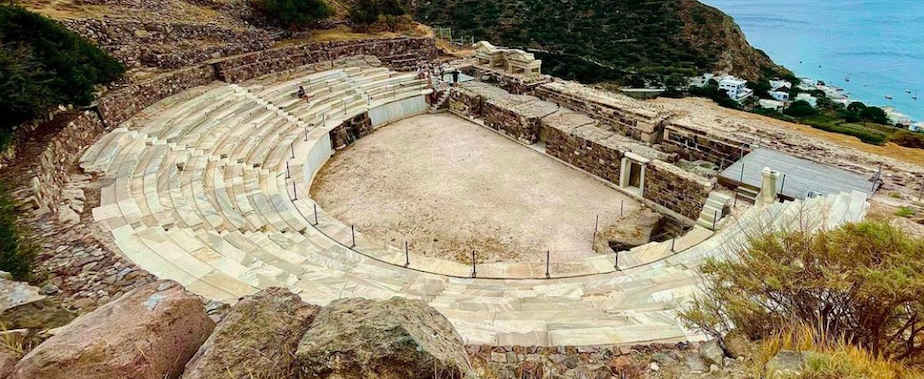
We created our blog with the purpose to present you all the things to do in Milos island, Greece! Find at this page all the archaeological sites Milos that deserves your time to visit!
Must-see Archaeological sites Milos
Located in the heart of the Cycladic islands, Milos is a gem filled with history and archaeological wonders. Renowned, for its rock formations and crystal clear waters Milos is also home to numerous ancient sites and important settlements that provide a glimpse into the islands rich past.
The island boasts settlements that date back to the Cycladic civilization from the early Bronze Age that thrived in the Aegean Sea between 3000 BC and 1100 BC. Its distinctive geological composition, shaped by origins has greatly influenced its landscape. Many of Milos attractions are nestled within the terrain offering visitors a captivating blend of natural beauty and ancient human civilization. The volcanic rocks found in Milos were the result of extreme hydrothermal activity that explains why there is so much obsidian on the island.
Years of excavations on the island have uncovered an array of artifacts and remnants from historical periods shedding light on Milos importance as a prominent hub in ancient times. From settlements to ruins Milos archaeological sites provide a comprehensive exploration of the islands past and its role, within the broader Cycladic civilization.
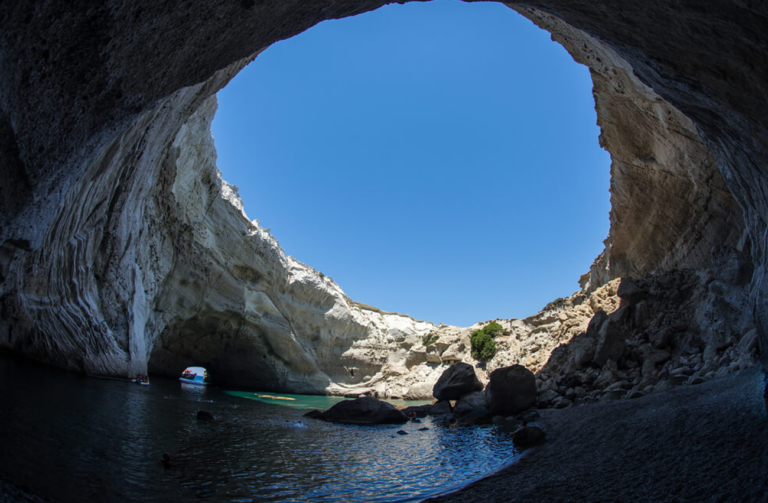
Whether you’re visiting the theater of Milos exploring the catacombs strolling through Klimas city or admiring the renowned Venus de Milo statue – this captivating island offers an abundance of historical marvels to discover.
Whether you’re a lover of history or simply curious, about the world exploring the sights of Milos offers a journey into the past. An opportunity to appreciate the islands rich cultural heritage, within the Cyclades region.
Find full information about the Archaeological sites of Milos island!
Archaeological sites Milos, the site of Phylakopi
The archaeological site of Phylakopi – must see archaeological sites Milos – situated on the part of Milos Island is thought to have been inhabited since the millennium BCE. It holds importance as one of the most important Cycladic settlements of the Bronze age belonging to both Minoan and Mycenaean civilizations.
Phylakopi was a city known for its designed architecture and skilled craftsmanship. This is evident from the artifacts and pottery discovered at the site. Among these treasures one of the findings is the “Lady of Phylakopi ” a marble figurine believed to date back to around 2000 BCE.
Excavations carried out in Phylakopi have provided insights into aspects of ancient Cycladic civilization, including social dynamics, economic activities and cultural practices. Its strategic coastal location and fertile surroundings allowed it to flourish as a hub for trade and agricultural productivity.
This ancient site stands as evidence of urbanization and complex societies that thrived in the Cyclades region during the Bronze Age. Its historical significance and preserved remnants make it an intriguing destination for enthusiasts in ancient civilizations and their development.
A helpful suggestion; When I’m on Milos with friends I will take the bus from Adamas to Apollonia and tell the driver to stop at Phylakopis site.
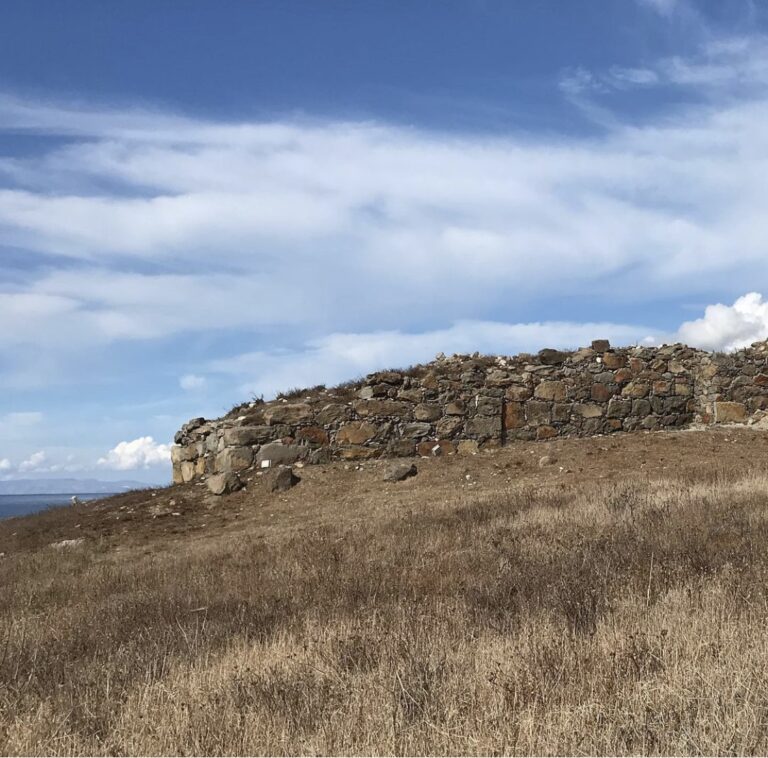
A helpful suggestion; When I’m on Milos with friends I will take the bus from Adamas to Apollonia and tell the driver to stop at Phylakopis site.
Catacombs of milos island
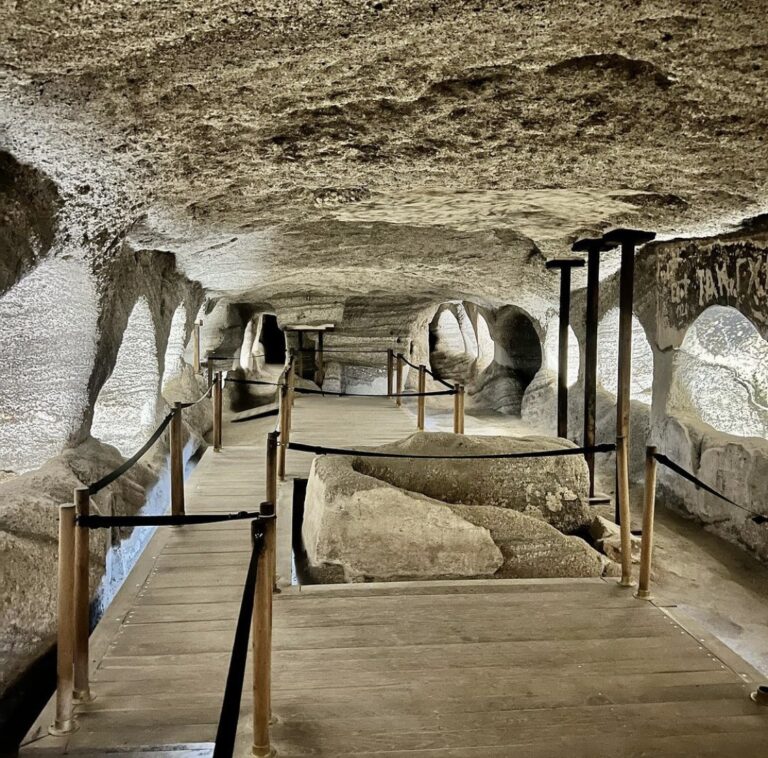
The catacombs – must see archaeological sites Milos – are one captivating site that provides a glimpse into the early Christian history of the area. These underground burial grounds are thought to originate from the 1st century AD. Were utilized for burying the deceased and conducting hidden rituals during times of persecution. The catacombs hold significance as one of Greeces early Christian landmarks illustrating how Christianity spread throughout the region. The intricate labyrinth of tunnels and chambers is adorned with captivating frescoes and inscriptions that offer insights into the beliefs and practices of that era. Exploring this site allows visitors to gain a deeper appreciation, for Greeces early Christian period.
Archaeological sites Milos, the Ancient city of Klima
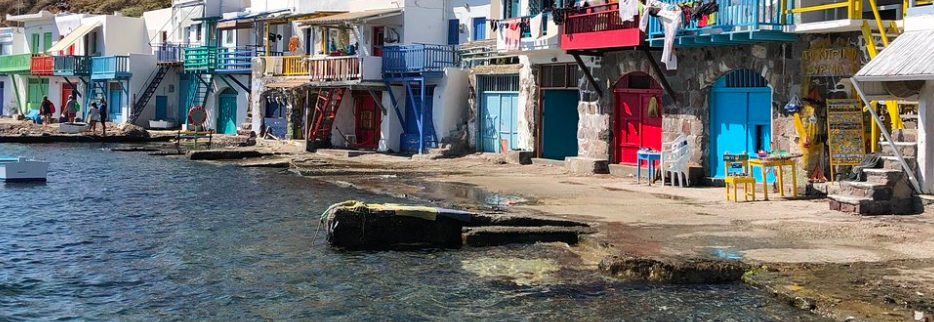
Once you visit the village Klima, you can find the ruins of the ancient city of Klima, the island’s first port. The city was build from the Dorians and it was the second largest city of Milos island, that was located from the southest part of the village Trypiti to the present-day Klima area. Visitors can explore the two citadels of Profitis Helias and Pyrgaki, view sections of the market hall, Hellenistic and Roman temple remnants, parts of the ancient theatre. Walking down from Trypiti to the Catacombs the ruins of the ancient city walls can be found and a little further down si the location where the statue of Aphrodite of Milos was found on 1820 by a local farmer.
Venus de Milo, Archaeological sites Milos
The ancient city of Milos holds a captivating treasure that has fascinated art enthusiasts and historians, for centuries. Among the remains of the city walls the statue known as Aphrodite of Milos was discovered in 1820. This famous marble statue is now famously referred to as the Venus de Milo.
It is believed that this timeless symbol of beauty and grace was sculpted by the ancient Greek artist Alexandros of Antioch. Standing at a height of 6 feet and 8 inches the Venus de Milo is admired for its craftsmanship and enchanting allure. Despite its missing arms, which only adds to its mystique admirers are still captivated by its pose and intricate details.
The discovery of the Venus de Milo has not provided insights into ancient Greek art and culture but has also sparked endless debates and speculations about its origin and purpose. Some believe it represents the goddess Aphrodite while others argue it may depict a woman or another deity altogether.
Regardless of its identity the Venus de Milo remains a symbol of beauty, grace and artistic achievement, from the ancient world.
Archaeological sites Milos, Museum - Ancient Theatre
The archaeological museum of milos is home, to a range of artifacts that date back to the Neolithic period. It offers a captivating window into the islands background. Additionally the ancient theater stands as a testament to Milos Islands legacy allowing us to glimpse into the entertainment and traditions of bygone eras. Embark on this journey, with us as we explore the sites of Milos Island and unveil the wonders of its ancient civilization
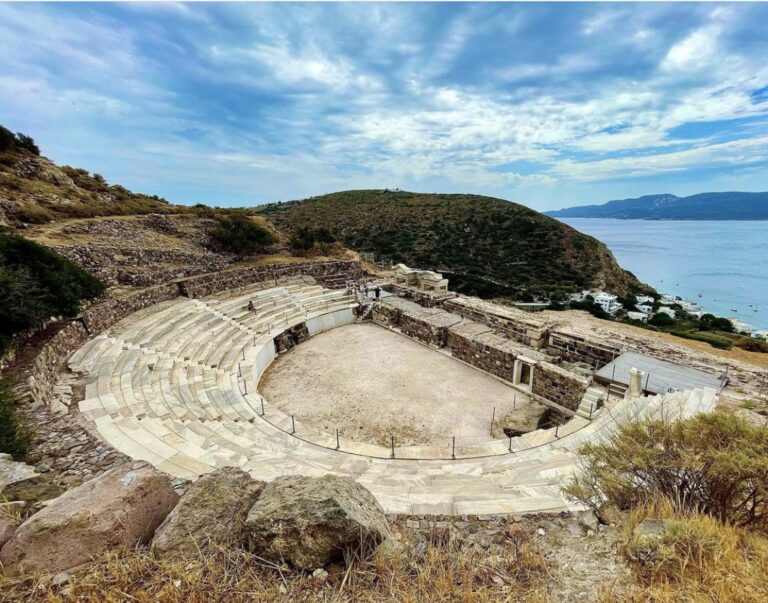
Things to do, Boat tour in Milos
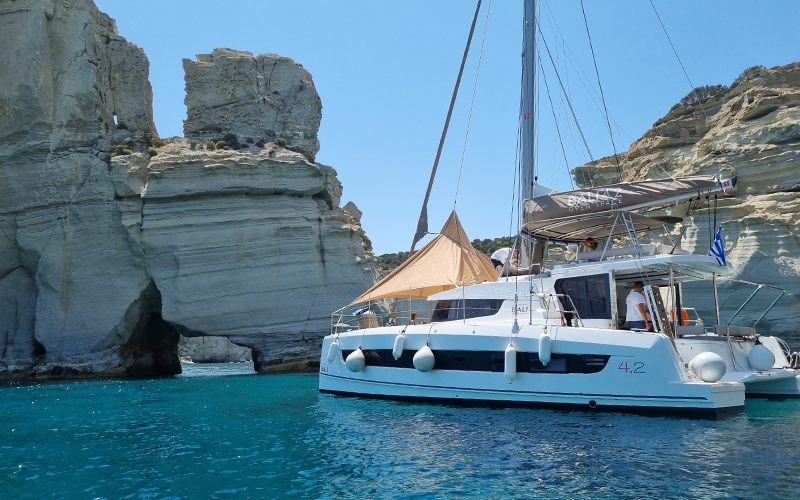
A very nice option while being on the island is to take a boat tour around the island. There are a lot of different companies that offer different trips around the coastline of the island and stop at the amazing beaches. Some of them offer full day trips, some others half day and some others private trips. In general you will find the option that suits better your schedule. In order to take a right decision on which company to choose see reviews and photos from the online sources. All of them till today start from Adamantas, located in the center of the island. You can walk along the port and find all the available options.
For the best boat tour in Milos, we will be more than happy to sail with you!! Find our Milos cruises here.


